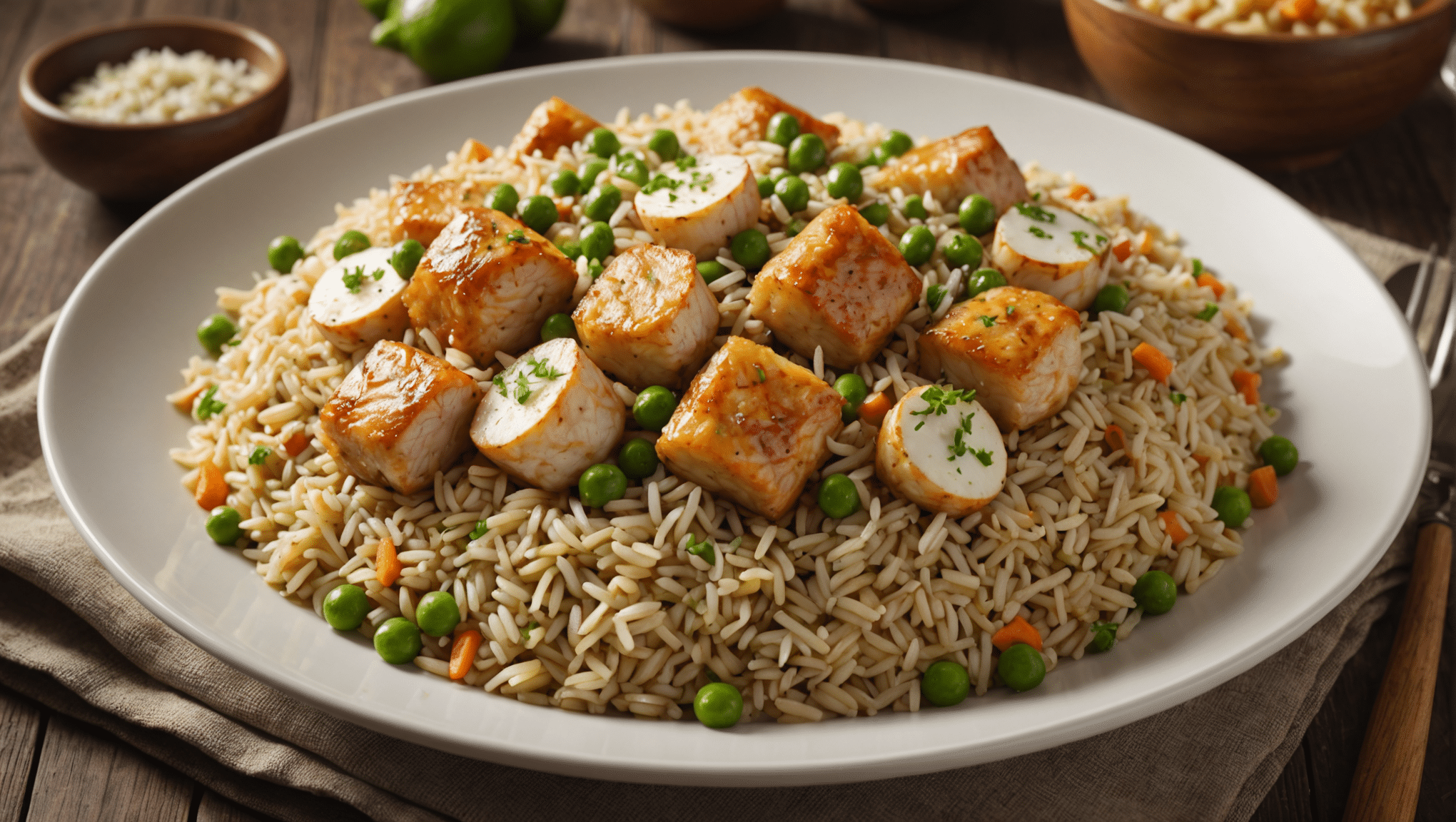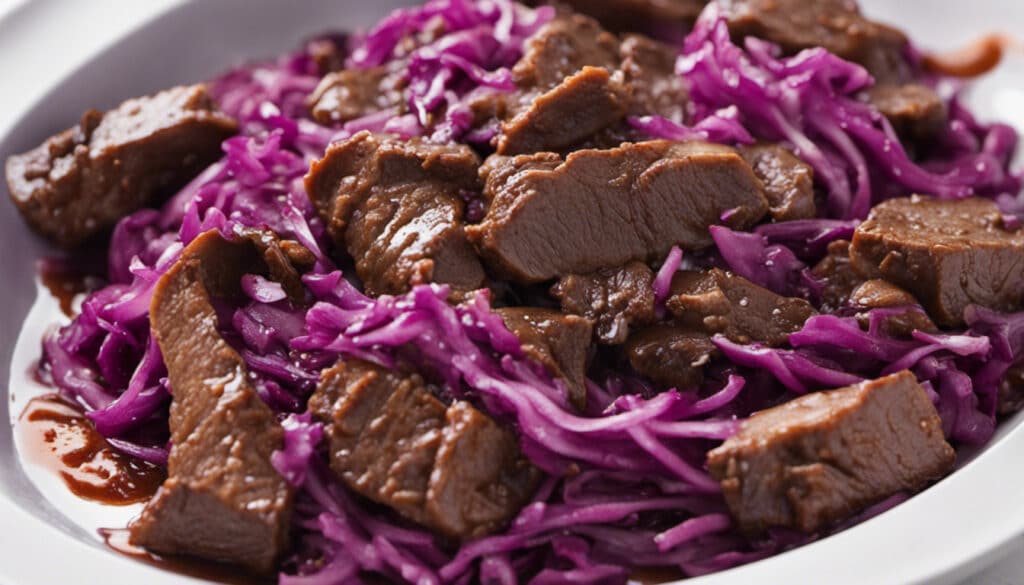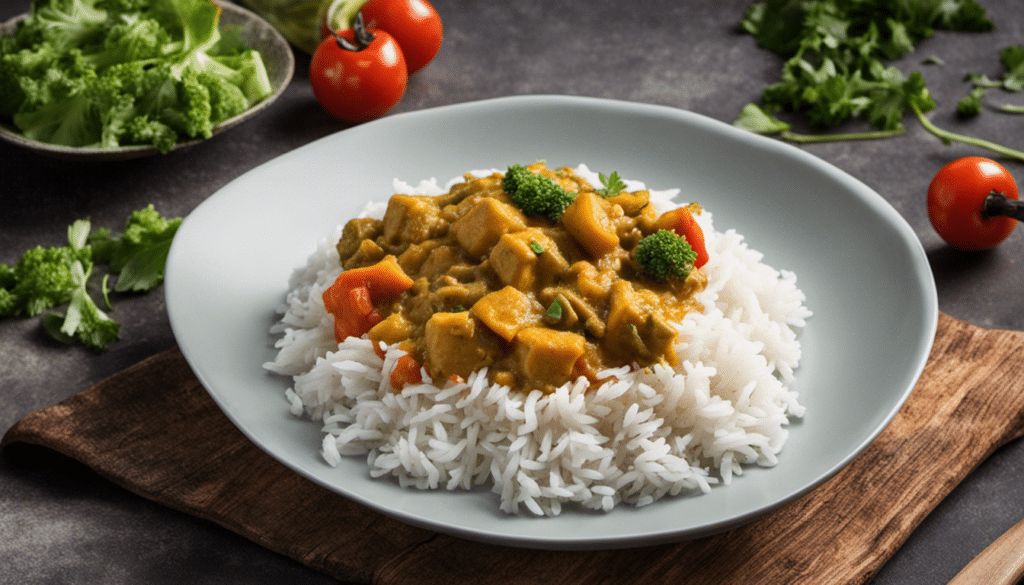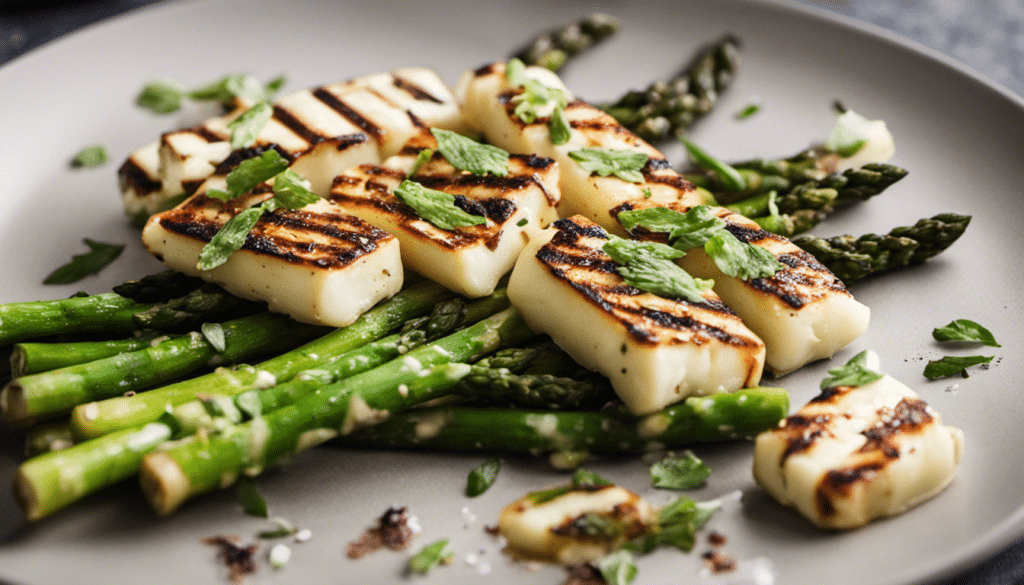| Prep: 15 mins | Cook: 35 mins | Difficulty: Easy | Serves: 6 |
| kcal | fat | saturates | carbs |
| 450 | 12g | 2g | 55g |
| sugars | fibre | protein | salt |
| 7g | 3g | 30g | 1.5g |
Why I Love Dutch Kip Pilav
Kip Pilav might just be one of my most beloved dishes, and not only because of its delightful blend of flavors. It’s actually a Dutch recipe that has a special place in my heart, harking back to my travels across Europe where I encountered the endless culinary ingenuity of chefs who seamlessly fuse traditional tastes with contemporary twists.
Connecting Cultures
One of the many reasons I have a profound affection for Kip Pilav is its uncanny ability to mix diverse ingredients—like pineapple and turmeric—into one symphony of taste. Much like my own culinary journey, this dish stands at the crossroads of various cultures. The comfort of chicken and rice combines with the aromatic spices commonly found in Middle Eastern and Asian cuisine, creating something uniquely delightful. Fellow food enthusiasts like Jamie Oliver have often played with similar concepts, blending disparate culinary traditions into cohesive, mouth-watering dishes. It’s always inspiring to see culinary boundaries being broken, and Kip Pilav is a perfect example of that innovation.
Memories and Flavors
Kip Pilav also resonates with me on a personal level. The warmth of the dish often takes me back to cold evenings in Seattle, where a meal bursting with flavor and warmth is not just appreciated but necessary. The pineapple chunks in this recipe particularly remind me of the sweet-salty combinations present in Japanese teriyaki dishes, which have always been a comfort food for me. The blend of spices—cinnamon, cumin, and turmeric—infuses the dish with an aromatic aura that speaks to my love for complex, layered flavors.
This dish bears a resemblance to other global classics, like the American jambalaya or the Spanish paella, both of which focus on the harmonious blend of rice, protein, and vegetables. But Kip Pilav brings its own unique charm and balance, serving as an excellent standalone dish or a magnificent accompaniment to a light salad or roasted vegetables.
If you’re at all intrigued by fusion recipes that offer something familiar yet refreshingly new, Kip Pilav is definitely a dish you’ll want to dive into. Its ability to bring together such varied ingredients and create a cohesive, delightful meal is a testament to the beauty of culinary exploration and creativity.
What You’ll Need
- 1.5 pounds chicken breast, cut into bite-sized pieces
- 2 tablespoons olive oil
- 1 large onion, finely chopped
- 2 cloves garlic, minced
- 2 cups uncooked white rice
- 4 cups chicken broth
- 1 can (14.5 oz) diced tomatoes, undrained
- 1 cup frozen peas
- 1 cup canned pineapple chunks, drained
- 1 teaspoon ground cinnamon
- 1 teaspoon ground cumin
- 1/2 teaspoon ground turmeric
- Salt and pepper to taste
- Fresh parsley, chopped (for garnish)
“`
Method
Step One
Heat the olive oil in a large skillet over medium-high heat. Add the chicken breast pieces and cook until they are browned on all sides and no longer pink in the center. Remove the chicken from the skillet and set aside.
Step Two
In the same skillet, add the finely chopped onion and sauté until it becomes translucent and starts to brown. Add the minced garlic and cook for an additional minute until fragrant.
Step Three
Add the uncooked white rice to the skillet and stir well to coat the rice with the oil, onions, and garlic. Continue to cook for about 2-3 minutes, allowing the rice to lightly toast.
Step Four
Pour in the chicken broth, diced tomatoes (including their liquid), ground cinnamon, ground cumin, and ground turmeric. Stir everything together until well combined. Bring the mixture to a boil.
Step Five
Reduce the heat to low, cover the skillet, and let it simmer for about 15 minutes or until the rice is almost cooked through.
Step Six
Add the frozen peas, drained pineapple chunks, and the cooked chicken back into the skillet. Stir to combine all the ingredients. Season with salt and pepper to taste.
Step Seven
Cover the skillet again and let it simmer for an additional 5-7 minutes, or until the rice is fully cooked and the peas are heated through.
Step Eight
Remove the skillet from heat. Garnish with freshly chopped parsley before serving. Enjoy your Kip Pilav!




